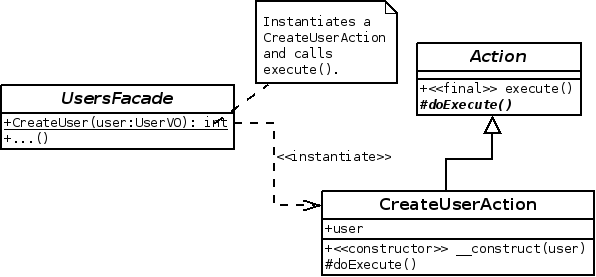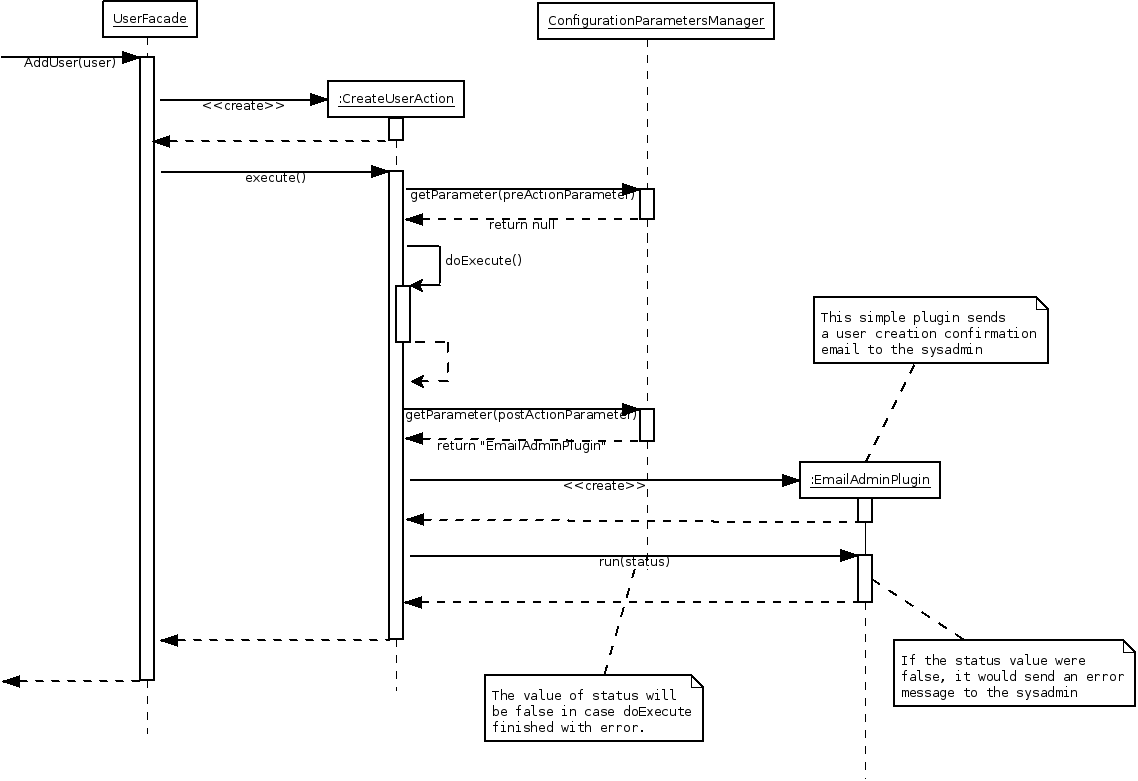Business logic layer and plugin system
Purpose
This layer implements the busienss logic of the application and exposes it as a set of operations grouped in Facade objects. In its design we have used the patterns Facade and Business Delegate, in addition to Singleton, and Template Method.
Business logic layer design
The XXFacade classes expose the interface of the business logic layer. Each one of them consists in a grouping of logically related use cases, where each use case is a method. We are not interested in the existence of different implementations of the business logic, therefore the Facade classes are Singleton with a concrete implementation. Find below an example with some of these classes:

However, the implementation of the logic does not reside in the interior of the methods of the facades, but it is delegated in the hierarchy of Action classes There exists a XXAction class for every method of in the facade, which implements the logic of that particular use case. The role of the methods in the facades is instantiate the corresponding action object, execute it and return its results. This relation is shown in the next diagram:

The Action classes are an implementation of the Bussiness Delegate pattern. They implement the business logic of the application model of while hiding it to client code that uses it.
Plugin system
The diagram below shows in detail the implementation of an Action class. In our design, they do not only implement the business logic, but they also provide the support for plugins, code blocks which are added before or after the execution of a task in the business logic.

The Action class has one public method called execute(), which is the only entry point to the code of the operation. Its children classes, one per operation in the business logic, redefine the template method doExecute(), where they actually implement the task. The reason for the existence of these two separate operations is that execute() also takes care of the management and execution of any plugins associated to its action. The process is detailed in the next diagram:

According to the sequence diagram, when the method execute() in CreateUserAction is called, it makes a call to the ConfigurationParametersManager to check if that action has any associated plugins that should be previously run. As the result is negative, it continues and runs doExecute(), which actually implements the user creation. Once it has finished, if checks if there is an associated plugin to be run after the action, and finds one called EmailAdminPlugin. In this moment, the class is loaded and instanced, and its run() method is called.
Configuration variables are used to enable the execution of plugins, hence the dependency between the Action class and the ConfigurationParametersManager The name of the configuration variables that control the plugins for a particular action is stored in the attributes preActionParameter and postActionParameter, which are defined in the Action class their value set in the child classes.